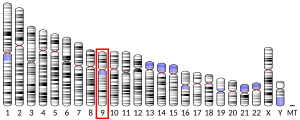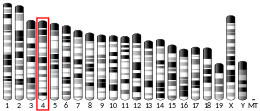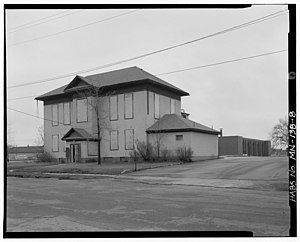TPM2
TPM2| TPM2 | |||||||||||||||||||||||||
|---|---|---|---|---|---|---|---|---|---|---|---|---|---|---|---|---|---|---|---|---|---|---|---|---|---|
| 식별자 | |||||||||||||||||||||||||
| 별칭 | TPM2, AMCD1, DA1, DA2B, HEL-S-273, NEM4, TMSB, 트로포미오신 2(베타), 트로포미오신 2, DA2B4 | ||||||||||||||||||||||||
| 외부 ID | OMIM: 190990 MGI: 98810 HomoloGene: 134045 GeneCard: TPM2 | ||||||||||||||||||||||||
| |||||||||||||||||||||||||
| |||||||||||||||||||||||||
| |||||||||||||||||||||||||
| |||||||||||||||||||||||||
| 직교체 | |||||||||||||||||||||||||
| 종 | 인간 | 마우스 | |||||||||||||||||||||||
| 엔트레스 | |||||||||||||||||||||||||
| 앙상블 | |||||||||||||||||||||||||
| 유니프로트 | |||||||||||||||||||||||||
| RefSeq(mRNA) | |||||||||||||||||||||||||
| RefSeq(단백질) | |||||||||||||||||||||||||
| 위치(UCSC) | Cr 9: 35.68 – 35.69Mb | Cr 4: 43.51 – 43.52Mb | |||||||||||||||||||||||
| PubMed 검색 | [3] | [4] | |||||||||||||||||||||||
| 위키다타 | |||||||||||||||||||||||||
| |||||||||||||||||||||||||
트로포미오신 베타 체인으로도 알려진 β-트로포미오신은 인간에서 TPM2 유전자에 의해 인코딩되는 단백질이다.[5][6] β-tropomyomosin은 액틴 필라멘트를 안정화하고 근육수축을 조절하는 기능을 하는 근육 특유의 코일 디머다.
구조
β-트로포미오신은 분자량(284개의 아미노산)에서는 약 32 kDa이지만, 여러 개의 이음체 변형이 존재한다.[7][8][9][10] 트로포미신(Tropomysin)은 두 개의 알파헬리컬 체인으로 구성된 유연한 단백질 호모디머 또는 헤테로디메이터로, 근육의 기능 단위로 7악틴 분자를 감싸기 위해 구부러진 코일 준수를 채택한다. 액틴 필라멘트의 두 홈을 따라 엔드 투 엔드로 중합되며 필라멘트에 안정성을 제공한다.[11] 트로포미오신 조광기는 다양한 조합의 트로포미오신 등소형으로 구성된다. 인간의 스트리핑된 근육은 TPM1(α-트로포미오신), TPM2(β-트로포미오신) 및 TPM3(γ-트로포미오신) 유전자의 단백질을 표현하며, α-트로포미오신은 스트로미오신이 스트리팅 근육에서 지배적인 등소형이다. 빠른 골격근과 심장근육은 α-호모디머를 더 많이 포함하고, 느린 골격근은 β-호모디머를 더 많이 포함하고 있다.[12] 인간의 심장 근육에서 α-트로포미오신 대 β-트로포미오신의 비율은 대략 5:1이다.[13][14] 트로포모신 이소폼의 다른 조합은 서로 다른 친화력을 가지고 트로포닌 T를 결합하는 것으로 나타나, 이소폼 결합이 특정한 기능적 영향을 주기 위해 사용된다는 것을 증명했다.[12]
함수
β-트로포미오신은 α-트로포닌 및 트로포닌 복합체(트로포닌 I, 트로포닌 C, 트로포닌 T로 구성)와 연관되어 액틴과 미오신 상호작용을 변조하는 기능을 한다. 디아스톨에서는 트로포모신-트로포닌 복합체가 이러한 상호작용을 억제하고, 시스톨 동안 사코플라스믹 레티쿨룸에서 나오는 세포내 칼슘의 상승은 트로포닌 C에 결합되어 액토모신 ATPase를 억제하고 수축을 허용하는 트로포닌-트로포모신 복합체의 순응적인 변화를 유도한다.[12]
β-트로포미오신 이소폼의 기능에 대한 구체적인 기능적 통찰력은 유전자변형을 채택한 연구에서 나왔다. 성인 심장근육에서 β-트로포미오신 과다압박 연구로 β-트로포미오신 발현이 34배 증가하여 αβ-트로포미오신 헤테로디메르가 우선 형성되었다. 유전자이전 심장은 좌심실 이완의 최대 비율의 감소뿐만 아니라 이완 시간의 현저한 지연을 보였다.[12] 심장에 β-트로포미오신(총 트로포미오신의 75% 이상)을 보다 적극적으로 과다압박하면 10~14일 된 생쥐가 사망하고 심장 이상이 생기므로 트로포미오신 이소성형의 정상 분포가 정상 심장기능에 매우 중요하다.[15]
심장비대증의 질병 모델에서 β-트로포미오신은 압력 과부하 유도 후 2일 이내에 다시 발현되는 것으로 나타났다.[16]
98% α-트로포미오신(α-트로포미오신)을 발현하는 생쥐의 연구 결과, α-트로포미오신은 C-terminus에서 1개의 아미노산인 세린-283에서 인산염화될 수 있다는 사실이 밝혀졌다. 또한 β-트로포미오신에는 위치 283에 세린 잔류물이 있으므로 β-트로포미오신 역시 인산염일 가능성이 있다.[17] 알라닌에 대한 α-트로포미오신의 인산화 부위가 변이된 생쥐의 유전자변형 연구는 인산화 작용이 트로포미오신 중합, 인접한 트로포미오신 분자 간의 머리와 꼬리 상호 작용, 협동성, 미오신 ATPase 활성, 스트레스에 대한 심장 반응에 영향을 미칠 수 있다는 것을 보여주었다.[18]
임상적 유의성
심부전 환자의 β-트로포미오신의 감소가 입증되었는데, 이는 고장 심실체가 α-트로포미오신만을 표현했기 때문이다.[19]
TPM2의 이질성 돌연변이는 근육섬유 주변부의 캡과 같은 구조물에 의해 정의된 희귀 장애인 선천성 캡 근병증 환자에게서 확인되었다.[20][21][22][23]
TPM2의 돌연변이는 근육 약화와 네말린 신체의 특징인 희귀 질환인 네말린 근병증과도 관련이 있다.[24][25][26]
이러한 환자에게서 관찰된 근육 약화는 액틴에 대한 돌연변이 TPM2 친화력의 변화 또는 칼슘에 의한 수축 활성화 감소 때문일 수 있다.[29][30][31] 게다가, 연구는 교량 교차 부착 및 분리 비율의 변경과 [32]ATPase 비율의 변화를 발표했다.[30][33]
상호작용
TPM2는 다음과 상호 작용하는 것으로 나타났다.
참조
- ^ a b c GRCh38: 앙상블 릴리스 89: ENSG00000198467 - 앙상블, 2017년 5월
- ^ a b c GRCm38: 앙상블 릴리스 89: ENSMUSG000028464 - 앙상블, 2017년 5월
- ^ "Human PubMed Reference:". National Center for Biotechnology Information, U.S. National Library of Medicine.
- ^ "Mouse PubMed Reference:". National Center for Biotechnology Information, U.S. National Library of Medicine.
- ^ Hunt CC, Eyre HJ, Akkari PA, Meredith C, Dorosz SM, Wilton SD, Callen DF, Laing NG, Baker E (Aug 1995). "Assignment of the human beta tropomyosin gene (TPM2) to band 9p13 by fluorescence in situ hybridisation". Cytogenetics and Cell Genetics. 71 (1): 94–5. doi:10.1159/000134070. PMID 7606936.
- ^ "Entrez Gene: TPM2 tropomyosin 2 (beta)".
- ^ Perry SV (2001). "Vertebrate tropomyosin: distribution, properties and function". Journal of Muscle Research and Cell Motility. 22 (1): 5–49. doi:10.1023/A:1010303732441. PMID 11563548. S2CID 12346005.
- ^ "Protein sequence of human TPM2 (Uniprot ID: P07951)". Cardiac Organellar Protein Atlas Knowledgebase (COPaKB). Retrieved 1 July 2015.
- ^ "Protein sequence of human TPM2 (Uniprot ID: P07951-2)". Cardiac Organellar Protein Atlas Knowledgebase (COPaKB). Retrieved 1 July 2015.
- ^ "Protein sequence of human TPM2 (Uniprot ID: P07951-3)". Cardiac Organellar Protein Atlas Knowledgebase (COPaKB). Retrieved 1 July 2015.
- ^ Brown JH, Kim KH, Jun G, Greenfield NJ, Dominguez R, Volkmann N, Hitchcock-DeGregori SE, Cohen C (Jul 2001). "Deciphering the design of the tropomyosin molecule". Proceedings of the National Academy of Sciences of the United States of America. 98 (15): 8496–501. Bibcode:2001PNAS...98.8496B. doi:10.1073/pnas.131219198. PMC 37464. PMID 11438684.
- ^ a b c d Muthuchamy M, Grupp IL, Grupp G, O'Toole BA, Kier AB, Boivin GP, Neumann J, Wieczorek DF (Dec 1995). "Molecular and physiological effects of overexpressing striated muscle beta-tropomyosin in the adult murine heart". The Journal of Biological Chemistry. 270 (51): 30593–603. doi:10.1074/jbc.270.51.30593. PMID 8530495.
- ^ Dube DK, McLean MD, Dube S, Poiesz BJ (Sep 2014). "Translational control of tropomyosin expression in vertebrate hearts". Anatomical Record. 297 (9): 1585–95. doi:10.1002/ar.22978. PMID 25125172. S2CID 19982025.
- ^ Yin Z, Ren J, Guo W (Jan 2015). "Sarcomeric protein isoform transitions in cardiac muscle: a journey to heart failure". Biochimica et Biophysica Acta (BBA) - Molecular Basis of Disease. 1852 (1): 47–52. doi:10.1016/j.bbadis.2014.11.003. PMC 4268308. PMID 25446994.
- ^ Muthuchamy M, Boivin GP, Grupp IL, Wieczorek DF (Aug 1998). "Beta-tropomyosin overexpression induces severe cardiac abnormalities". Journal of Molecular and Cellular Cardiology. 30 (8): 1545–57. doi:10.1006/jmcc.1998.0720. PMID 9737941.
- ^ Izumo S, Nadal-Ginard B, Mahdavi V (Jan 1988). "Protooncogene induction and reprogramming of cardiac gene expression produced by pressure overload". Proceedings of the National Academy of Sciences of the United States of America. 85 (2): 339–43. Bibcode:1988PNAS...85..339I. doi:10.1073/pnas.85.2.339. PMC 279543. PMID 2963328.
- ^ "Protein sequence alignment of human TPM1 and TPM2". Uniprot Knowledgebase. Retrieved 2 July 2015.
- ^ Schulz, EM; Wieczorek, DF (August 2013). "Tropomyosin de-phosphorylation in the heart: what are the consequences?". Journal of Muscle Research and Cell Motility. 34 (3–4): 239–46. doi:10.1007/s10974-013-9348-7. PMID 23793376. S2CID 15297144.
- ^ Purcell IF, Bing W, Marston SB (Sep 1999). "Functional analysis of human cardiac troponin by the in vitro motility assay: comparison of adult, foetal and failing hearts". Cardiovascular Research. 43 (4): 884–91. doi:10.1016/s0008-6363(99)00123-6. PMID 10615415.
- ^ Ohlsson M, Quijano-Roy S, Darin N, Brochier G, Lacène E, Avila-Smirnow D, Fardeau M, Oldfors A, Tajsharghi H (Dec 2008). "New morphologic and genetic findings in cap disease associated with beta-tropomyosin (TPM2) mutations". Neurology. 71 (23): 1896–901. doi:10.1212/01.wnl.0000336654.44814.b8. PMID 19047562. S2CID 24356825.
- ^ Tajsharghi H, Ohlsson M, Lindberg C, Oldfors A (Sep 2007). "Congenital myopathy with nemaline rods and cap structures caused by a mutation in the beta-tropomyosin gene (TPM2)". Archives of Neurology. 64 (9): 1334–8. doi:10.1001/archneur.64.9.1334. PMID 17846275.
- ^ Lehtokari VL, Ceuterick-de Groote C, de Jonghe P, Marttila M, Laing NG, Pelin K, Wallgren-Pettersson C (Jun 2007). "Cap disease caused by heterozygous deletion of the beta-tropomyosin gene TPM2". Neuromuscular Disorders. 17 (6): 433–42. doi:10.1016/j.nmd.2007.02.015. PMID 17434307. S2CID 54349245.
- ^ Clarke NF, Domazetovska A, Waddell L, Kornberg A, McLean C, North KN (May 2009). "Cap disease due to mutation of the beta-tropomyosin gene (TPM2)". Neuromuscular Disorders. 19 (5): 348–51. doi:10.1016/j.nmd.2009.03.003. PMID 19345583. S2CID 38636941.
- ^ Mokbel N, Ilkovski B, Kreissl M, Memo M, Jeffries CM, Marttila M, Lehtokari VL, Lemola E, Grönholm M, Yang N, Menard D, Marcorelles P, Echaniz-Laguna A, Reimann J, Vainzof M, Monnier N, Ravenscroft G, McNamara E, Nowak KJ, Laing NG, Wallgren-Pettersson C, Trewhella J, Marston S, Ottenheijm C, North KN, Clarke NF (Feb 2013). "K7del is a common TPM2 gene mutation associated with nemaline myopathy and raised myofibre calcium sensitivity". Brain. 136 (Pt 2): 494–507. doi:10.1093/brain/aws348. PMID 23378224.
- ^ Monnier N, Lunardi J, Marty I, Mezin P, Labarre-Vila A, Dieterich K, Jouk PS (Feb 2009). "Absence of beta-tropomyosin is a new cause of Escobar syndrome associated with nemaline myopathy". Neuromuscular Disorders. 19 (2): 118–23. doi:10.1016/j.nmd.2008.11.009. PMID 19155175. S2CID 38985021.
- ^ Donner K, Ollikainen M, Ridanpää M, Christen HJ, Goebel HH, de Visser M, Pelin K, Wallgren-Pettersson C (Feb 2002). "Mutations in the beta-tropomyosin (TPM2) gene--a rare cause of nemaline myopathy". Neuromuscular Disorders. 12 (2): 151–8. doi:10.1016/s0960-8966(01)00252-8. PMID 11738357. S2CID 54360043.
- ^ Tajsharghi H, Kimber E, Holmgren D, Tulinius M, Oldfors A (Mar 2007). "Distal arthrogryposis and muscle weakness associated with a beta-tropomyosin mutation". Neurology. 68 (10): 772–5. doi:10.1212/01.wnl.0000256339.40667.fb. PMID 17339586. S2CID 41982388.
- ^ Sung SS, Brassington AM, Grannatt K, Rutherford A, Whitby FG, Krakowiak PA, Jorde LB, Carey JC, Bamshad M (Mar 2003). "Mutations in genes encoding fast-twitch contractile proteins cause distal arthrogryposis syndromes". American Journal of Human Genetics. 72 (3): 681–90. doi:10.1086/368294. PMC 1180243. PMID 12592607.
- ^ Marttila M, Lehtokari VL, Marston S, Nyman TA, Barnerias C, Beggs AH, Bertini E, Ceyhan-Birsoy O, Cintas P, Gerard M, Gilbert-Dussardier B, Hogue JS, Longman C, Eymard B, Frydman M, Kang PB, Klinge L, Kolski H, Lochmüller H, Magy L, Manel V, Mayer M, Mercuri E, North KN, Peudenier-Robert S, Pihko H, Probst FJ, Reisin R, Stewart W, Taratuto AL, de Visser M, Wilichowski E, Winer J, Nowak K, Laing NG, Winder TL, Monnier N, Clarke NF, Pelin K, Grönholm M, Wallgren-Pettersson C (Jul 2014). "Mutation update and genotype-phenotype correlations of novel and previously described mutations in TPM2 and TPM3 causing congenital myopathies". Human Mutation. 35 (7): 779–90. doi:10.1002/humu.22554. PMC 4200603. PMID 24692096.
- ^ a b Robinson P, Lipscomb S, Preston LC, Altin E, Watkins H, Ashley CC, Redwood CS (Mar 2007). "Mutations in fast skeletal troponin I, troponin T, and beta-tropomyosin that cause distal arthrogryposis all increase contractile function". FASEB Journal. 21 (3): 896–905. doi:10.1096/fj.06-6899com. PMID 17194691. S2CID 25491760.
- ^ Marttila M, Lemola E, Wallefeld W, Memo M, Donner K, Laing NG, Marston S, Grönholm M, Wallgren-Pettersson C (Feb 2012). "Abnormal actin binding of aberrant β-tropomyosins is a molecular cause of muscle weakness in TPM2-related nemaline and cap myopathy". The Biochemical Journal. 442 (1): 231–9. doi:10.1042/BJ20111030. PMID 22084935.
- ^ Ochala J, Li M, Tajsharghi H, Kimber E, Tulinius M, Oldfors A, Larsson L (Jun 2007). "Effects of a R133W beta-tropomyosin mutation on regulation of muscle contraction in single human muscle fibres". The Journal of Physiology. 581 (Pt 3): 1283–92. doi:10.1113/jphysiol.2007.129759. PMC 2170843. PMID 17430991.
- ^ Marston S, Memo M, Messer A, Papadaki M, Nowak K, McNamara E, Ong R, El-Mezgueldi M, Li X, Lehman W (Dec 2013). "Mutations in repeating structural motifs of tropomyosin cause gain of function in skeletal muscle myopathy patients". Human Molecular Genetics. 22 (24): 4978–87. doi:10.1093/hmg/ddt345. PMC 3836477. PMID 23886664.
- ^ Zhu J, Bilan PJ, Moyers JS, Antonetti DA, Kahn CR (Jan 1996). "Rad, a novel Ras-related GTPase, interacts with skeletal muscle beta-tropomyosin". The Journal of Biological Chemistry. 271 (2): 768–73. doi:10.1074/jbc.271.2.768. PMID 8557685.
- ^ Guy PM, Kenny DA, Gill GN (Jun 1999). "The PDZ domain of the LIM protein enigma binds to beta-tropomyosin". Molecular Biology of the Cell. 10 (6): 1973–84. doi:10.1091/mbc.10.6.1973. PMC 25398. PMID 10359609.
- ^ Brown HR, Schachat FH (Apr 1985). "Renaturation of skeletal muscle tropomyosin: implications for in vivo assembly". Proceedings of the National Academy of Sciences of the United States of America. 82 (8): 2359–63. Bibcode:1985PNAS...82.2359B. doi:10.1073/pnas.82.8.2359. PMC 397557. PMID 3857586.
추가 읽기
- Gunning P, Weinberger R, Jeffrey P (Apr 1997). "Actin and tropomyosin isoforms in morphogenesis". Anatomy and Embryology. 195 (4): 311–5. doi:10.1007/s004290050050. PMID 9108196. S2CID 9692297.
- Holtzer ME, Kidd SG, Crimmins DL, Holtzer A (Mar 1992). "Beta beta homodimers exist in native rabbit skeletal muscle tropomyosin and increase after denaturation-renaturation". Protein Science. 1 (3): 335–41. doi:10.1002/pro.5560010305. PMC 2142203. PMID 1304342.
- Höner B, Shoeman RL, Traub P (Jul 1992). "Degradation of cytoskeletal proteins by the human immunodeficiency virus type 1 protease". Cell Biology International Reports. 16 (7): 603–12. doi:10.1016/S0309-1651(06)80002-0. PMID 1516138.
- Chevray PM, Nathans D (Jul 1992). "Protein interaction cloning in yeast: identification of mammalian proteins that react with the leucine zipper of Jun". Proceedings of the National Academy of Sciences of the United States of America. 89 (13): 5789–93. Bibcode:1992PNAS...89.5789C. doi:10.1073/pnas.89.13.5789. PMC 402103. PMID 1631061.
- Prasad GL, Meissner S, Sheer DG, Cooper HL (Jun 1991). "A cDNA encoding a muscle-type tropomyosin cloned from a human epithelial cell line: identity with human fibroblast tropomyosin TM1". Biochemical and Biophysical Research Communications. 177 (3): 1068–75. doi:10.1016/0006-291X(91)90647-P. PMID 2059197.
- Libri D, Mouly V, Lemonnier M, Fiszman MY (Feb 1990). "A nonmuscle tropomyosin is encoded by the smooth/skeletal beta-tropomyosin gene and its RNA is transcribed from an internal promoter". The Journal of Biological Chemistry. 265 (6): 3471–3. doi:10.1016/S0021-9258(19)39791-1. PMID 2303454.
- Widada JS, Ferraz C, Capony JP, Liautard JP (Apr 1988). "Complete nucleotide sequence of the adult skeletal isoform of human skeletal muscle beta-tropomyosin". Nucleic Acids Research. 16 (7): 3109. doi:10.1093/nar/16.7.3109. PMC 336462. PMID 3368322.
- MacLeod AR, Houlker C, Reinach FC, Smillie LB, Talbot K, Modi G, Walsh FS (Dec 1985). "A muscle-type tropomyosin in human fibroblasts: evidence for expression by an alternative RNA splicing mechanism". Proceedings of the National Academy of Sciences of the United States of America. 82 (23): 7835–9. Bibcode:1985PNAS...82.7835M. doi:10.1073/pnas.82.23.7835. PMC 390864. PMID 3865200.
- Gimona M, Watakabe A, Helfman DM (Oct 1995). "Specificity of dimer formation in tropomyosins: influence of alternatively spliced exons on homodimer and heterodimer assembly". Proceedings of the National Academy of Sciences of the United States of America. 92 (21): 9776–80. Bibcode:1995PNAS...92.9776G. doi:10.1073/pnas.92.21.9776. PMC 40885. PMID 7568216.
- Bamshad M, Watkins WS, Zenger RK, Bohnsack JF, Carey JC, Otterud B, Krakowiak PA, Robertson M, Jorde LB (Dec 1994). "A gene for distal arthrogryposis type I maps to the pericentromeric region of chromosome 9". American Journal of Human Genetics. 55 (6): 1153–8. PMC 1918435. PMID 7977374.
- Takenaga K, Nakamura Y, Sakiyama S, Hasegawa Y, Sato K, Endo H (Mar 1994). "Binding of pEL98 protein, an S100-related calcium-binding protein, to nonmuscle tropomyosin". The Journal of Cell Biology. 124 (5): 757–68. doi:10.1083/jcb.124.5.757. PMC 2119958. PMID 8120097.
- Maruyama K, Sugano S (Jan 1994). "Oligo-capping: a simple method to replace the cap structure of eukaryotic mRNAs with oligoribonucleotides". Gene. 138 (1–2): 171–4. doi:10.1016/0378-1119(94)90802-8. PMID 8125298.
- Shoeman RL, Sachse C, Höner B, Mothes E, Kaufmann M, Traub P (Jan 1993). "Cleavage of human and mouse cytoskeletal and sarcomeric proteins by human immunodeficiency virus type 1 protease. Actin, desmin, myosin, and tropomyosin". The American Journal of Pathology. 142 (1): 221–30. PMC 1886840. PMID 8424456.
- Tiso N, Rampoldi L, Pallavicini A, Zimbello R, Pandolfo D, Valle G, Lanfranchi G, Danieli GA (Jan 1997). "Fine mapping of five human skeletal muscle genes: alpha-tropomyosin, beta-tropomyosin, troponin-I slow-twitch, troponin-I fast-twitch, and troponin-C fast". Biochemical and Biophysical Research Communications. 230 (2): 347–50. doi:10.1006/bbrc.1996.5958. PMID 9016781.
- Gimona M, Lando Z, Dolginov Y, Vandekerckhove J, Kobayashi R, Sobieszek A, Helfman DM (Mar 1997). "Ca2+-dependent interaction of S100A2 with muscle and nonmuscle tropomyosins". Journal of Cell Science. 110 (5): 611–21. doi:10.1242/jcs.110.5.611. PMID 9092943.
- Suzuki Y, Yoshitomo-Nakagawa K, Maruyama K, Suyama A, Sugano S (Oct 1997). "Construction and characterization of a full length-enriched and a 5'-end-enriched cDNA library". Gene. 200 (1–2): 149–56. doi:10.1016/S0378-1119(97)00411-3. PMID 9373149.








